
August 2013
|
The mission of the Economic Development Administration (EDA) is to lead the federal economic development agenda by promoting innovation and competitiveness, preparing American regions for growth and success in the worldwide economy. The agency has a competitive grant process and has established the following investment priorities as criteria: collaborative regional innovation, public/private partnerships, national strategic priorities, global competitiveness, environmentally sustainable development, and economically distressed and underserved communities.
Message From Deputy Assistant Secretary
|
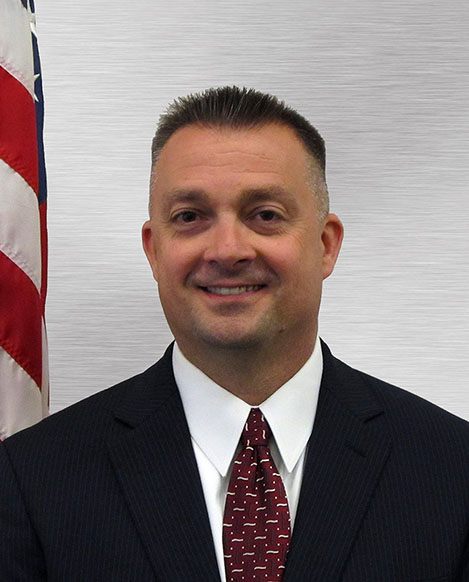 |
|
Joe McKinney, executive director of the National Association of Development Organizations |
Joe McKinney serves as executive director of the National Association of Development Organizations (NADO). Headquartered in Washington, D.C., NADO provides advocacy, education, research, and training for the nation’s 540 regional planning and development organizations. Prior to coming to NADO in October 2012, McKinney was executive director of Land-of-Sky Regional Council in Asheville, North Carolina, from 2003 to 2012. Under his leadership, Land-of-Sky became nationally recognized for its innovation and program expansion in areas such as planning and economic development, workforce development, transportation and transit, aging services, volunteer services, and geographic information systems. Recently, McKinney answered some questions about the role that economic development organizations play in strengthening U.S. competitiveness and how they are successfully partnering with other organizations and the federal government to do so.
Q: Last November, you became executive director of the National Association of Development Organizations (NADO). What do you see as NADO’s top priorities today?
Our organization’s top priority is to promote regional strategies, partnerships, and solutions to strengthen the economic competitiveness and quality of life across America’s local communities. Specifically, NADO serves as the “eyes and ears” of the nation’s regional development organizations, particularly as it relates to federal policies and legislation that may have local impact. We support federal initiatives that encourage regional approaches to improving the economic conditions in our nation’s small and rural communities. NADO has a keen focus on public infrastructure improvements, comprehensive economic development planning, transportation planning, business development finance services, and other traditional building blocks that promote regional development and economic growth.
Since becoming director, my priority has been to encourage our members to better communicate regional successes to their state and federal officials. For many years, regional development organizations have quietly worked behind the scenes to promote locally-driven economic development. As a result, our biggest champions are often local elected officials. However, if we are to continue to be catalysts for economic development, we must make sure that our successes are effectively communicated beyond the local and regional level.
Q: What role do the regional economic development organizations you represent play in strengthening the economic competitiveness of America’s regions?
Our member organizations are typically governed by local elected officials, along with representatives from the business community, educational institutions, nonprofit sector, and the general public. They work collaboratively with federal, state, and local officials to solve area-wide challenges and build strong communities. Particularly in small metro and rural regions, regional economic development organizations provide the capacity and resources that smaller local governments may not have.
Challenges to our regions’ economies cannot be solved using a traditional “silo” approach. Regions must work together collaboratively (and comprehensively) to build competitive economies. Our regional development organizations often serve as conveners that pulls together public and private sector groups to find solutions that have lasting impacts.
NADO Annual ConferenceNADO’s Annual Training Conference in the premier training conference for regional development organizations nationwide. This year, the conference will be held August 24–27 in San Francisco, California, and will bring together more than 650 professionals, including executive directors, policy board members, program staff, and many others. For more information, visit the conference website. |
Q: How can the federal government successfully partner with economic development organizations to promote regional growth and job creation?
The Economic Development Administration (EDA) has an ideal model for partnership on a local and regional level. First, the agency’s planning grant program provides economic development districts with the resources to adequately assess the region’s challenges, identify opportunities and impacts, and prioritize needs. Once these comprehensive plans are in place, EDA provides funding opportunities through its Public Works and Economic Adjustment programs to help communities promote growth. Most importantly, EDA remains focused on job creation through these grant opportunities, instead of speculative funding that simply “hopes” that the end result might be the creation of a few jobs.
|
“Challenges to our regions’ economies cannot be solved using a traditional “silo” approach. Regions must work together collaboratively (and comprehensively) to build competitive economies.” |
Q: Our aging infrastructure has come to the forefront in recent public discussions about U.S. economic competitiveness. Where do you see the greatest needs, and how can they be best addressed by an agency such as EDA?
Infrastructure has always been a core component of a strong national economy. Across the nation, local governments are faced with repairing and replacing water and sewer lines and facilities, roads, and other community facilities that serve as the backbone of a region. As it has for many years, EDA is a key partner in helping local governments and regions address this critical challenge. By requiring a local financial commitment in order to access federal funding, EDA ensures that communities provide the appropriate resources to rebuild their infrastructure. This rebuilding is not the sole responsibility of the federal government, the state government, or the local government—it’s a shared responsibility that requires partnerships from all levels of government.
Q: EDA has long worked with NADO’s members—including North Carolina’s Land-of-Sky Regional Council, where you were previously the executive director—to fund economic planning studies. How effective are these to the economic development process?
I have been fortunate to serve in various leadership roles in government on the local, regional, and national levels. Throughout my career I have considered myself an implementer, rather than a planner. My satisfaction comes from accomplishing goals, rather than planning for them. However, the one lesson I learned early on is that planning is not only important to the success of a project, it is essential. A community cannot achieve economic success without having a coordinated plan in place to guide that success. The collective process of identifying what is needed in a region is the beauty of the EDA planning grants. It enables communities to work together to achieve success. As Dwight D. Eisenhower once said, “Plans are nothing. Planning is everything.”
SUCCESS STORY
Vermont Furniture Manufacturer Rebounds with Help from EDA-Supported Organization
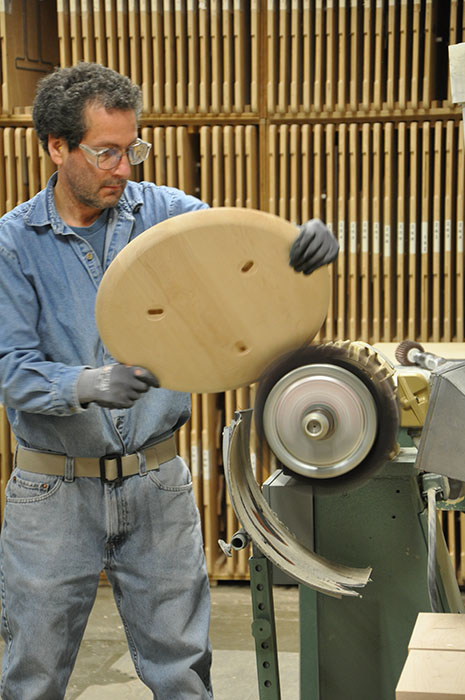 |
|
Worker at Newport Furniture Parts |
In 2011, Newport Furniture Parts, a family-owned wood products manufacturer located in Newport, Vermont, was suffering from declining sales and an overall lack of competitiveness in the market for wood furniture and components. The company’s chief executive officer, Dave Laforce, realized that management and staff were being stretched too thin by an increasingly cutthroat economic environment brought on by cheap imports. Newport’s long-established relationships with customers and the local community were suffering as a result. Realizing that these developments were eroding one of the company’s most important competitive advantages—its established networks of customers and workers—Laforce reached out to the Regional Wood Products Consortium for help.
The Consortium is a collaboration between the Northern Forest Center, a nonprofit organization, and the wood products manufacturing industry in the Maine, New Hampshire, Vermont, and northern New York. The Center helps businesses and communities in rural areas of northern New England and New York benefit from forest-based economic and conservation initiatives. In the wood products sector, the Center helps companies innovate to be more competitive and to safeguard the valuable jobs the industry offers in rural communities.
The Center matched Newport Furniture with Dovetail Partners, Inc., founder Dr. Jeffrey Howe, who engages small and medium-sized wood products companies in strategic planning and in creating what he refers to as “learning organizations.”
Laforce says that working with Dr. Howe allowed the company to realize a “transformational” strategic and cultural shift, courtesy of leadership retreats, and many hours of coaching and strategic business planning assistance. New organizational and management standards dramatically improved the company’s competitiveness in the marketplace. Within one year, the company increased sales 25 percent, improved fulfillment times 42 percent, and hired employees using new human resource strategies. Newport Furniture Parts now boasts annual sales of $8.5 million, and employs 75 people in its downtown Newport facility.
The Northern Forest Center has helped Newport Furniture and other manufacturers bring innovation into their business processes—cutting costs, speeding delivery times, building market share, and ultimately strengthening their competitive edge. The Economic Development Administration (EDA), in partnership with the U.S. Department of Agriculture, is furthering that success through $708,750 in investments made under the 2012 Rural Jobs and Innovation Accelerator Challenge. These funds are enabling the Center, the Northern Community Investment Corporation, and several other organizations based in New England to work with entrepreneurs and regional marketing programs to develop new, high-growth businesses by advancing commercialization of research, providing technical assistance, and setting up workforce training programs.
The Center is offering the program to manufacturers in northern New England for the first time through a partnership with the Woodwork Career Alliance (WCA), a national organization that is supplying standards and a credentialing system.
With a new company culture as a base, lean manufacturing practices promising the potential of further growth, and the prospect of a well-trained and credentialed workforce for the future, Newport Furniture Parts—in business now for 50 years—is looking at a much brighter future for its owners and its employees.
SPOTLIGHT
Laying the Foundation for a Stronger, More Durable America
In recent visits to Illinois and Tennessee, President Obama outlined strategies for strengthening America’s middle class by rebuilding public infrastructure, supporting the manufacturing sector, and training workers for the economic challenges ahead.
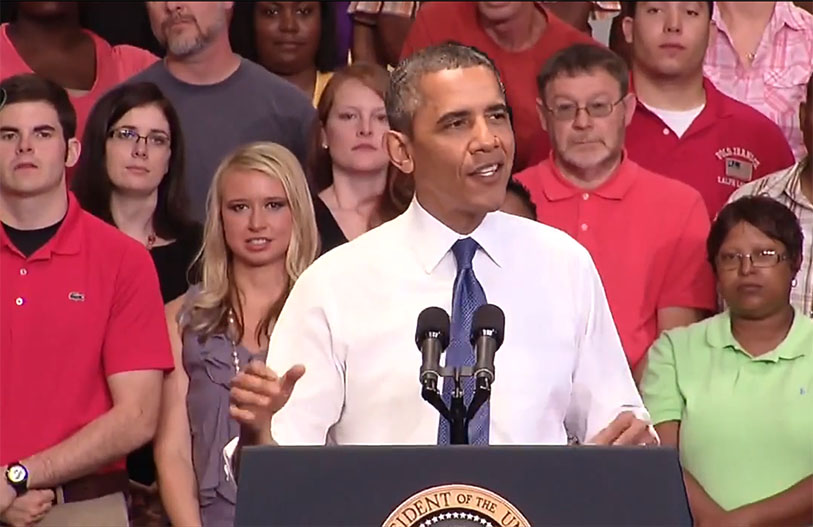 |
|
President Obama at Knox College, Galesburg, IL, July 24, 2013 |
In speeches last month in Galesburg, Illinois, and Chattanooga, Tennessee, President Obama detailed his strategy for supporting job creation and U.S. competitiveness to benefit the middle class. “We’ve started to lay a new foundation for a stronger, more durable America—the kind of economic growth that’s broad-based, the foundation required to make this century another American century,” said the president in Chattanooga on July 30, when he spoke to a gathering of Amazon employees.
Noting that as a share of the economy we currently invest less in our infrastructure than we did two decades ago, the president called for significant investments, including:
- a “Fix It First” focus on reducing the backlog of deferred maintenance on highways, bridges, and transit systems
- a “Rebuild America Partnership” to leverage private-sector investment
- new “America Fast Forward” bonds to pay for modernized schools.
Support for the U.S. manufacturing sector was another critical strategy highlighted by the president. “We want to create not just 15 manufacturing innovation institutes that connect businesses and universities and federal agencies to help communities left behind by global competition to become centers of high-tech jobs. Today, I’m asking Congress to … triple that number from 15 to 45—these hubs—where we’re getting businesses, universities, communities all to work together to develop centers of high-tech industries all throughout the United States that allow us to be at the forefront of the next revolution of manufacturing.”
Job training was another critical element cited by the president as a cornerstone of a strong middle class: “An education that prepares our children and workers for the global competition that they’re going to face.” His proposals include connecting 99 percent of U.S. students to high-speed Internet over the next five years, partnering with educators and entrepreneurs to make sure that high school students are equipped with the skills required for a high-tech economy, and pushing new efforts to train workers for the changing job market.
In his weekly address on July 27, the president summed up the importance of these efforts: “If we don’t make the investments necessary to make America a magnet for good jobs—in education, and manufacturing, and research, and our transportation and information networks—we might as well hit the ‘pause’ button while the rest of the world forges ahead in a global economy.”
HIGHLIGHTS
Secretary of Commerce Pritzker Launches Nationwide Listening Tour
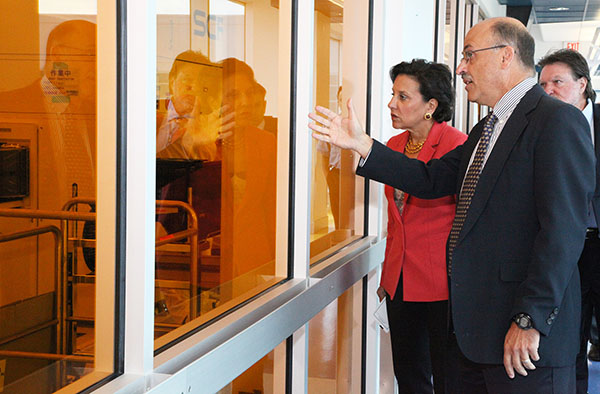 |
|
Secretary Penny Pritzker at New York College of Nanoscale Science and Engineering, July 30, 2013 |
Secretary of Commerce Penny Pritzker launched a nationwide listening tour in July, with plans to travel across the country to meet with business and thought leaders, entrepreneurs, academics, and Department of Commerce employees.
“As Secretary of Commerce, my goal is to serve as a bridge to the business community—both domestically and abroad—so that we can work together to strengthen the economy and create jobs and opportunities for all Americans,” said Pritzker. “I intend to leverage the sum of my experiences as an entrepreneur, a business leader, and a citizen deeply committed to American competitiveness to help strengthen the Department and the government-wide leadership it provides in areas such as manufacturing, attracting business investment, innovation, and exporting.”
Secretary Pritzker’s first stop was Colorado on July 18, where she toured Ball Aerospace and Technologies Corp., which produces spacecraft instruments and sensors, radio frequency and microwave technologies, and a variety of advanced aerospace technologies and products. She also participated in a roundtable with local business and community leaders, as well as government officials, to hear about the challenges they face when it comes to the growth and success of businesses and the economy.
On July 30, Pritzker traveled to Albany, New York, and Hartford, Connecticut. In Albany, she met with senior leadership of SEMATECH and the New York College of Nanoscale Science and Engineering (CNSE). In Hartford, she participated in a tour and roundtable discussion at APS Technology, a winner of the President’s E Award this year in recognition of its export successes.
Manufacturing Council Hears EDA Update
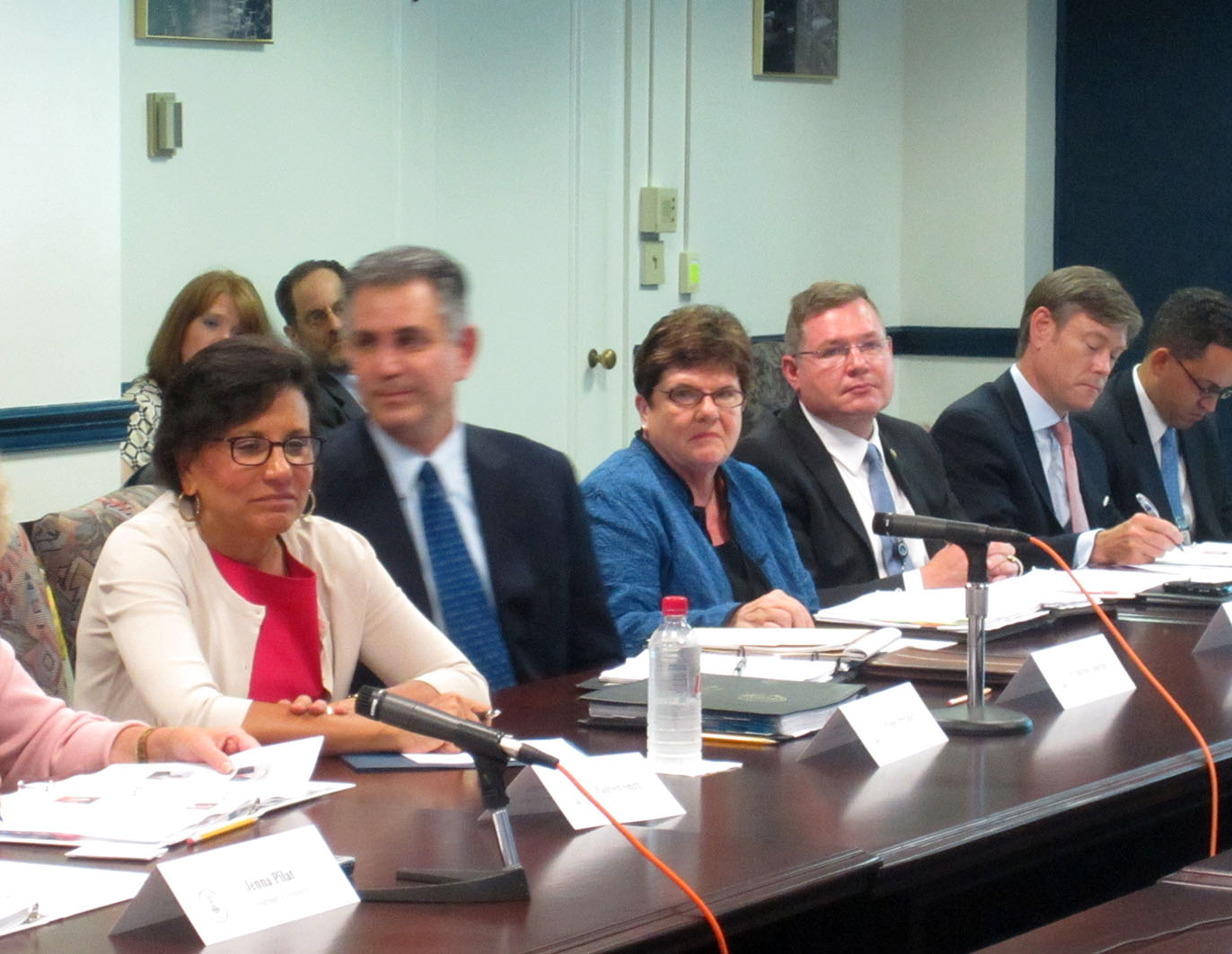 |
|
Secretary Penny Pritzker (left), Deputy Assistant Secretary Matt S. Erskine (far right) at Manufacturing Council |
On July 23, Deputy Assistant Secretary of Commerce for Economic Development Matt S. Erskine updated members of the Manufacturing Council on the work EDA is doing to promote U.S. manufacturing, and offered the latest details on the Investing in Manufacturing Communities Partnership (IMCP), which was proposed as part of the President’s 2014 budget. “The IMCP is being initiated this year through competitive funding for regional implementation-ready strategy grants,” said Erskine. “These strategy grants and roundtables will set the stage for larger-scale investments next year, as envisioned in the President’s budget.” For more information on IMCP, visit the EDA website.
SPECIAL FEATURE
How EDA is Supporting Critical Infrastructure in a Missouri City
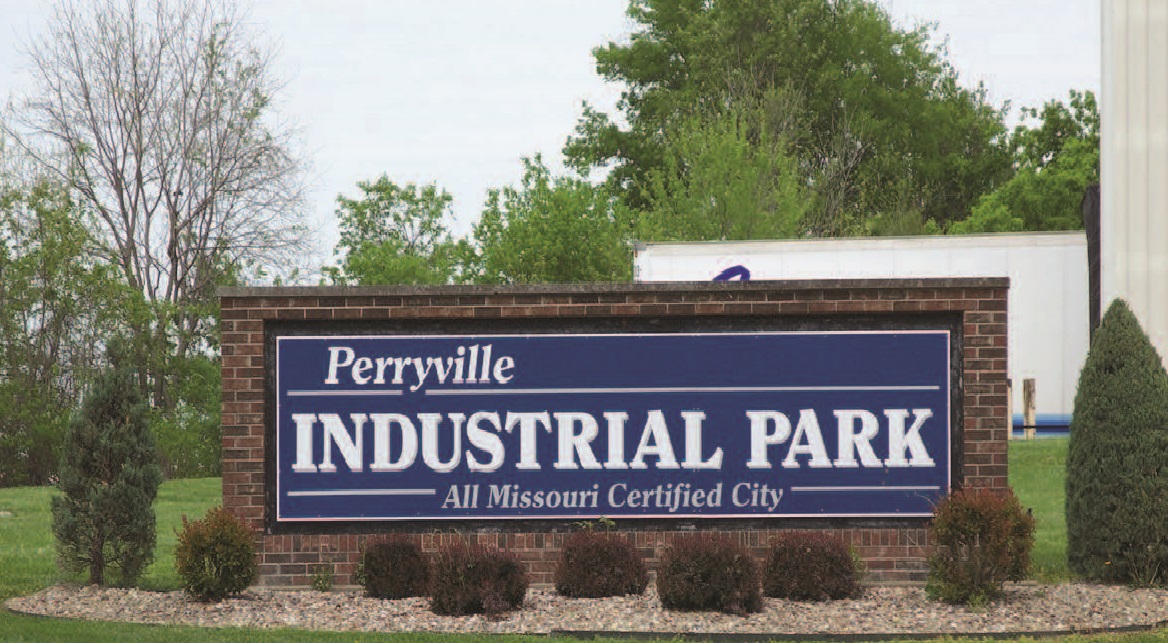 |
|
Entrance sign to Perryville Industrial Park |
Building critical infrastructure that businesses need to thrive and grow ensures that America continues to sustain an economy that supports good middle-class jobs. EDA has been at the forefront of such efforts, most recently in Perryville, Missouri, where it is co-investing with the state of Missouri and local authorities to help pay for improved road access to the Perryville Industrial Park.
Industrial parks are the economic lifeblood of many communities, particularly smaller ones. The Perryville Industrial Park is an excellent example of this phenomenon, being home to an impressive roster of companies that provide good jobs for residents of Perryville and surrounding Perry County. These include TG Missouri, a manufacturer of automotive components and a supplier to such companies as Toyota, and Robinson Construction, a specialized builder of industrial and manufacturing facilities.
The $1.5 million EDA investment in Perryville supports a $4.7 million project that will make possible the expansion of the Perryville Industrial Park by building a new road to connect two major nearby highways, providing an alternate means of accessing expanded shipping and receiving facilities.
Already, several companies located in the industrial park are ready to expand, having committed to making $27 million in capital investments once the new facilities are ready. They also anticipate adding 215 new jobs over the next several years.
A $1.5 million grant in support of the expansion of an industrial park in Missouri may seem small in the context of the overall $15 trillion U.S. economy. But in a place like Perryville—population 8,200—and in hundreds of places like it, EDA investments like this have a large impact. And it is in these projects that we can see the local growth that fuels regional, and ultimately national, prosperity.
|
|
|||
In This Issue
Updated Economic Development Directory Available
A valuable economic development resource, EDA’s Economic Development Directory, is now available on EDA’s website. This comprehensive directory offers a wealth of links to state and local economic development resources, including Revolving Loan Fund grantees, University Centers, Trade Adjustments Assistance Centers, and Economic Development Districts. Information can be accessed for all 50 states and U.S. territories through an easy-to-use map or drop-down menu. Visit the Economic Development Directory today at www.eda.gov/resources/economic-development-directory/. SelectUSA Investment Summit
SelectUSA 2013 Investment Summit. This first-ever event will take place in Washington, D.C., on October 31 and November 1, 2013, and will connect international and domestic investors and firms with economic development organizations from across the country in an effort to promote investment here and support the creation of American jobs. Participants will hear from world-class business leaders, senior administration officials, and industry and technical experts. The Summit will also feature an exhibition area and matchmaking sessions. For more information, visit the SelectUSA Investment Summit’s website. EDA-supported Data Portal Highlighted in WebinarMore than 500 participants in a webinar conducted July 25 by the NADO Research Foundation had the opportunity to learn about STATS America, a unique data resource developed by the Indiana Business Research Center (IBRC) at Indiana University’s Kelley School of Business with financial support from EDA. The portal uses data obtained from hundreds of federal, state, and private sources to make available numerous analytical tools that will be of use to economic development stakeholders in the private, public, and nonprofit sectors. These tools include profiles of all 50 states and 3,141 counties, with numerous economic and demographic indicators that are updated regularly. The webinar was the third in a series about various data tools tools developed with support from the EDA. Previous webinars in this series addressed the U.S. Cluster Map and Registry and Triple Bottom Line Tool. Visit the Know Your Region website to see the recorded webinars. The NADO Research Foundation is coordinating the webinars as part of its Know Your Region program, which is funded through an agreement with EDA.
Business Development Mission to Mexico Slated for
|

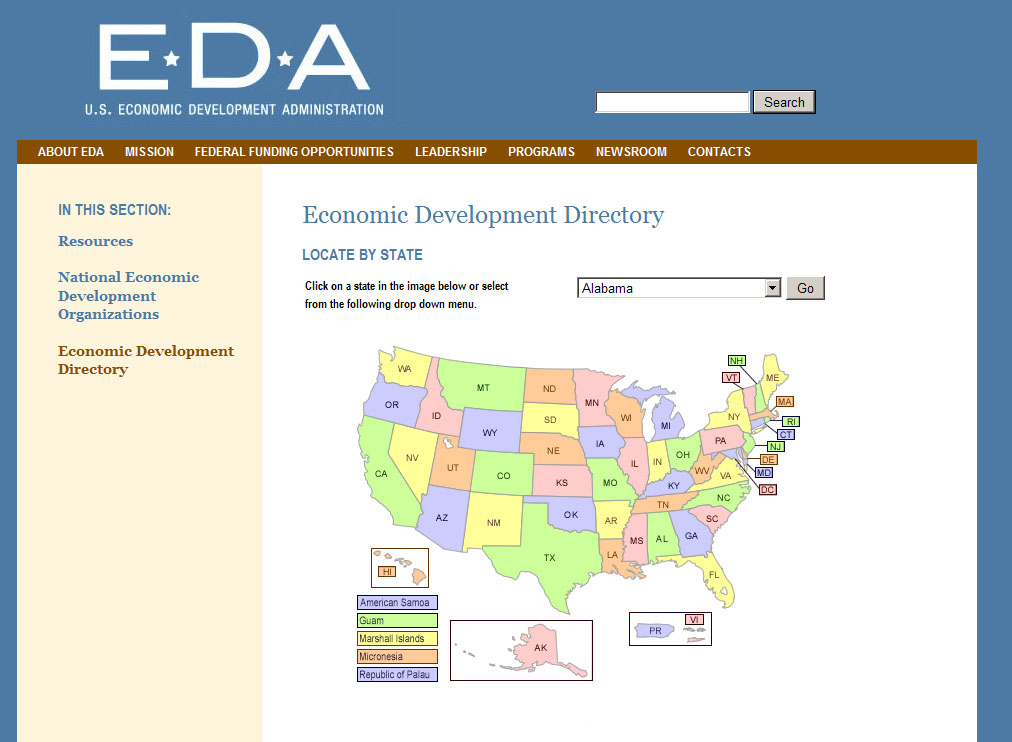
 Pre-registration is now open for the
Pre-registration is now open for the